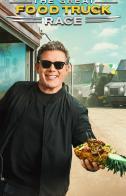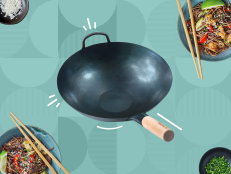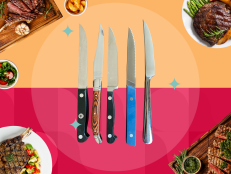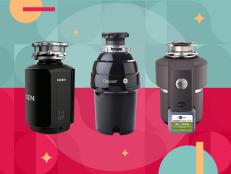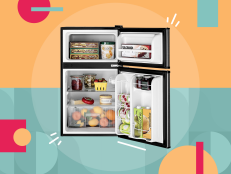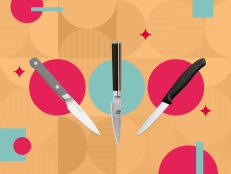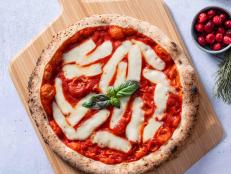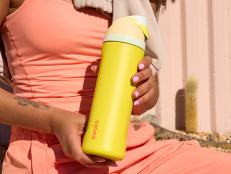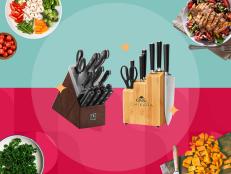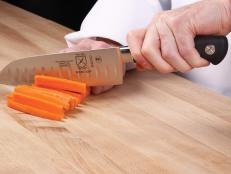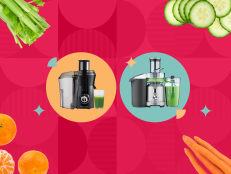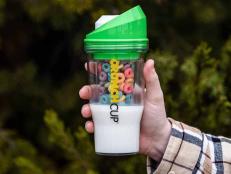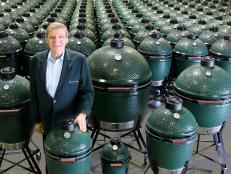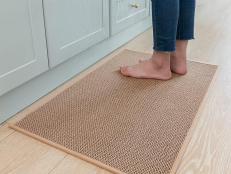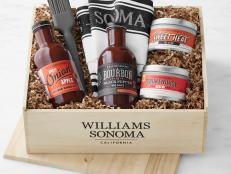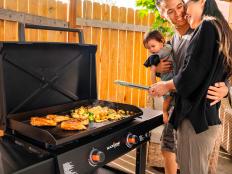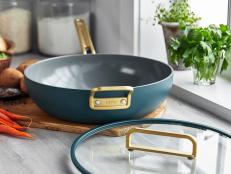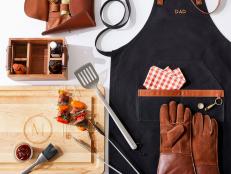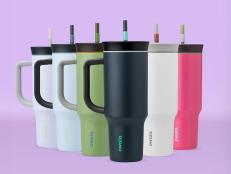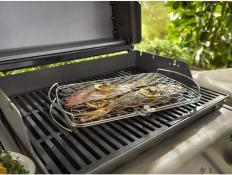The 6 Best Saucepans of 2024, Tested and Reviewed
This versatile piece of cookware should be in everyone's kitchen, and we boiled, whisked and stirred to find the best choice in every price point.


Taylor Murray
Our Top Saucepan Picks
Also in This Article
Tested by Taylor Murray
While it may be in the word, saucepans are good for so much more than just sauces. These metallic workhorses are an essential piece of kitchen equipment, second only to a frying pan or maybe a chef's knife. From boiling water for ramen noodles to heating up a bit of soup to whisking polenta, saucepans are designed to heat up liquid or saucy foods without spilling, splashing, or letting it over-reduce.
The spread of design between options on the market is vast, with saucepans coming in different materials, cladding, shapes and sizes. Some might have extra features, like lids with built-in strainers or pouring spouts shaped into the edge of the pot. We set out to find our top picks, from affordable aluminum options to cutting-edge hybrid-clad designs.
How We Tested
We started by thoroughly researching the wide array of saucepans on the market and reading reviews from real customers. We narrowed it down and purchased 16 saucepans from a variety of brands, choosing a capacity of three to four quarts. To test the saucepans, we made a classic recipe in each: macaroni and cheese. We chose this because a batch of mac and cheese has many techniques embedded in the recipe that can prove whether a saucepan is up to snuff or not such as boiling water, making a roux and overall capacity.
First, we boiled water and noted how quickly the water came to a boil with the lid on. We then added the pasta once it came to a boil and cooked it according to the package directions. Next, we made the roux by whisking butter and flour together in the pan and observed its performance, making sure the whisk didn't get into the corners of the pan so the flour didn't burn.

Taylor Murray

Taylor Murray

Taylor Murray
We then whisked in milk to make a bechamel and took note of any splatters or splashes that happened while bringing it to a boil and thickening. Next, we folded in the cheese and observed how easy it was to maneuver around the pan to make the cheese sauce. Finally, we stirred in the cooked pasta and combined the recipe.

Taylor Murray

Taylor Murray

Taylor Murray

Taylor Murray
As we tested each saucepan, we made notes during each stage of the recipe, noting things like the speed of heating, the presence of hotspots and the capacity of the saucepan.
- Roomy and balanced
- Even heat distribution
- Measurement markings inside
- Slightly heavy
All of our saucepans could accomplish simple tasks like boiling water, but the AVACRAFT saucepan stood apart from the others thanks to a few key design elements. For one, this model has a flared lip which makes drip-free pouring a breeze. It also has angled side spouts on both sides, as opposed to just one, making it usable for people with right- or left-handedness. The lid has a handy built-in strainer and a silicone-covered handle that stays cool during cooking. Inside the pan, there is an etched liquid measure for eyeballing ingredients at a glance.
When we were folding in the noodles for the macaroni and cheese, we had ample room to stir and fold without worrying about any pieces flying out. We noted no hotspots while whisking our bechamel and the gently sloping interior corners did not hold onto chunks of unmixed flour while making the roux. Overall, the design is balanced and even, with a handle that's comfortable to hold even when the pan is full of water and pasta.
- Material 18/10 stainless steel
- Sizes Available 1.5-, 2.5-, 3.5- and 6-quarts
- Dishwasher-Safe? Yes
- Oven-Safe? Yes, up to 350°F
- Induction-Compatible? Yes
- Compact
- Easy to clean
- Lightweight
- Plastic handle prone to melting
This saucepan from T-fal comes at an unbeatable price under $40, but that's not the only great thing about it. It's made from aluminum instead of steel, which makes it far lighter than many other saucepans on the market. For a basic, budget-friendly option, this is the one to pick. It has a compact size that's easy to store and the nonstick coating on the surface is easy to clean. The thin metal construction allowed water to boil fast yet didn't have much trouble with hotspots on the bottom of the pan.
While aluminum is what makes the pan lightweight, it does have a few drawbacks. For one, aluminum is a softer metal than steel and could be prone to denting if not treated carefully. The plastic handle also contributes to the low weight, but it is vulnerable to melting if left over a high flame.
- Material Nonstick-coated aluminum
- Sizes Available 3 quarts
- Dishwasher-Safe? Yes
- Oven-Safe? Yes, up to 350°F
- Induction-Compatible? Yes
- Safe for metal utensils
- Rapid boil
- Integrated lid strainer
- Lid doesn't seal spouts
- Not induction-compatible
Nonstick-coated saucepans have a dominating share of the market, and there's no small wonder. Sticky recipes like oatmeal, risotto and pasta with marinara all beg to be made in a saucepan, but the scrubbing afterward can be a nightmare. We tested saucepans with all kinds of nonstick cladding but preferred the Calphalon Premiere Hard-Anodized Nonstick best. A hard-anodized nonstick pan refers to cookware that has undergone a specific electrochemical process to increase its durability and resistance to corrosion. This process creates a thick, hard layer of aluminum oxide on the surface of the pan that's safe for use with metal utensils and is dishwasher-safe, a huge plus when it comes to nonstick pans.
Aside from the coating, this saucepan has comfortable handles, including the one on the lid which stays cool even when boiling liquids. The pot itself has handy pour spouts and a flared lip, which made pouring easy and hassle-free. Clean-up was a breeze, with little more than a rinse needed to wash away cheesy residue.
- Material Hard-anodized-coated aluminum with stainless-steel accents
- Sizes Available 3.5 quarts
- Dishwasher-Safe? Yes
- Oven-Safe? Yes, up to 450°F
- Induction-Compatible? No
- Spout for pouring
- Sleek design
- High sides limit drips and splashes
- Long heating
- Small hotspot
Newer, direct-to-consumer brands are making splashy products that rival favorites that have been on the market for decades. This saucepan from Material is one of those, with a beautiful design and high-quality construction. The five-ply cladding is both durable and responsive, heating up quickly enough and distributing heat evenly. That did prove to be an issue for us at one point, as that focused the heat under our smaller burner and led to a small patch of sticking when making bechamel. The built-in spout is handy, though it's only on one side so it only benefits right-handed folks. The handle is thicker and rounder than most and didn't get hot during cooking. This made it easy to grip wherever needed to facilitate carrying or pouring.
As far as stainless-steel saucepans go, this one was one of the easiest to clean and barely needed scrubbing. Unlike chrome-finished pots, the brushed look on this pot doesn't show every smudge and water spot, so you don't have to spend hours polishing it to a mirrors finish.
- Material 5-ply copper core with aluminum and stainless-steel cladding
- Sizes Available 3 quarts
- Dishwasher-Safe? Yes
- Oven-Safe? Yes, up to 500°F
- Induction-Compatible? Yes
- High heat tolerance
- Wide surface area
- Nonstick surface
- Expensive
- Has to be seasoned
HexClad's proprietary blend of cladding materials is known for bringing the best of both nonstick and stainless-steel cookware. The saucepan has a tri-ply construction, with lightweight aluminum sandwiched between two layers of stainless steel. The steel is laser-etched with a patented hexagonal nonstick surface so it repels sticky food but can still withstand ultra-high temperatures. The pan itself is designed to have a wider, flatter surface area with gently sloping corners that easily allow a whisk to move around.
There's a lot to love about this hybrid pan but it is on the pricier side as far as saucepans go. The surface also has to be briefly seasoned before first use and isn't ready to go upon arrival.
- Material Tri-ply aluminum and stainless steel with laser-etched nonstick surface
- Sizes Available 1-, 2-, 3- and 5-quarts
- Dishwasher-Safe? Yes
- Oven-Safe? Yes, up to 500°F
- Induction-Compatible? Yes
- High temperature rating
- Easy to clean
- Roomy interior
- Ceramic coating can stain
- Not induction-compatible
Ceramic-coated cookware offers a lot of the benefits of nonstick pans made using PFOAs but without the heat limitations and vulnerability to metal utensils. GreenPan's line of ceramic cookware has a "diamond-reinforced" nonstick coating that's safe for running through the dishwasher or baking in the oven up to 600 degrees F. That's higher than any saucepan we tested and says a lot about the pot's durability. We also liked how this pot uses ceramic on the inside of the pot where the cooking occurs and utilizes a more durable finish on the outside so less staining from a gas burner shows up over time.
During testing, we made a perfect batch of macaroni and cheese from start to finish. The water boiled quickly, the bechamel thickened without scorching, and we had plenty of room to fold noodles into hot cheese sauce. Overall, this is a great pick for someone looking for the convenience of cooking with nonstick but wants a few less limitations.
- Material Hard-anodized aluminum, ceramic nonstick coating and stainless-steel accents
- Sizes Available 1.1-, 2- (sold as a set) and 3-quarts
- Dishwasher-Safe? Yes
- Oven-Safe? Yes, up to 600°F
- Induction-Compatible? No
What to Look for When Buying a Saucepan
- Material: When buying a saucepan, consider the material, as it affects cooking performance and durability. Stainless steel is a popular choice for its durability and resistance to rust and staining. Nonstick coatings are great for easy cleanup but may not last as long as other materials, depending on how they are made. Ceramic pans offer an alternative to traditional nonstick coatings and offer a similar easy-to-clean finish without the use of PFOAs.
- Size/Capacity: Smaller saucepans (one to two quarts) are ideal for sauces, boiling eggs or reheating soups, while larger ones (three to four quarts) are better for cooking grains, making stews or preparing larger portions. Those looking to save space will find that a three to four-quart saucepan can handle most tasks and don't necessarily need a pair of pots.
- Details: The details of the saucepan, such as the handle, lid and pour spout, can make all the difference when comparing two similar pans. A comfortable, heat-resistant handle ensures safe and easy maneuvering, while a snug-fitting lid helps to retain moisture and heat during cooking. A pour spout can be a useful feature for draining liquids and thick sauces without making a mess. Some saucepans also come with markings inside for easy measuring.
- Care and Maintenance: Different materials require different levels of care and maintenance. Nonstick pans are generally easier to clean but typically need to be used with softer utensils to avoid scratching the surface. Stainless steel is durable enough to be scrubbed with a scouring brush if need be and can usually withstand higher temperatures. Some pans, like the HexClad we tested, need to be seasoned before first use to create a nonstick coating. Check the manufacturer's instructions to see if the saucepan is dishwasher-safe or if it requires hand washing.

Taylor Murray
Frequently Asked Questions
What is a saucepan?
A saucepan is a small cooking pot that ranges between two and four quarts of liquid. They often have straight sides, a long handle, and come with a lid to trap heat while bringing liquid up to a boil.
What's the difference between a saucepan and a saucier?
While both a saucepan and a saucier can be used for similar recipes, there are a few key differences in design. A saucepan typically has straight sides and a flat bottom, making it more suited for things like boiling water, making soups or cooking grains. A saucier will have much more sloped sides and a rounded bottom to allow for easier whisking and stirring. For recipes that require a lot of stirring, like gravy or lemon curd, a saucier doesn't have any tight corners that will trap solids. The rounded bottom also allows for better evaporation, which could be helpful if you need to reduce a sauce.
Can you put a saucepan in the oven?
The short answer is that it depends on the manufacturer and product. Many of the saucepans we tested were rated to high temperatures and could be placed in the oven, while others explicitly stated not to. If the saucepan is made of 100 percent stainless steel, then it's probably fine to go in the oven. Avoid putting any lids or parts with glass, rubber or plastic in the oven.





